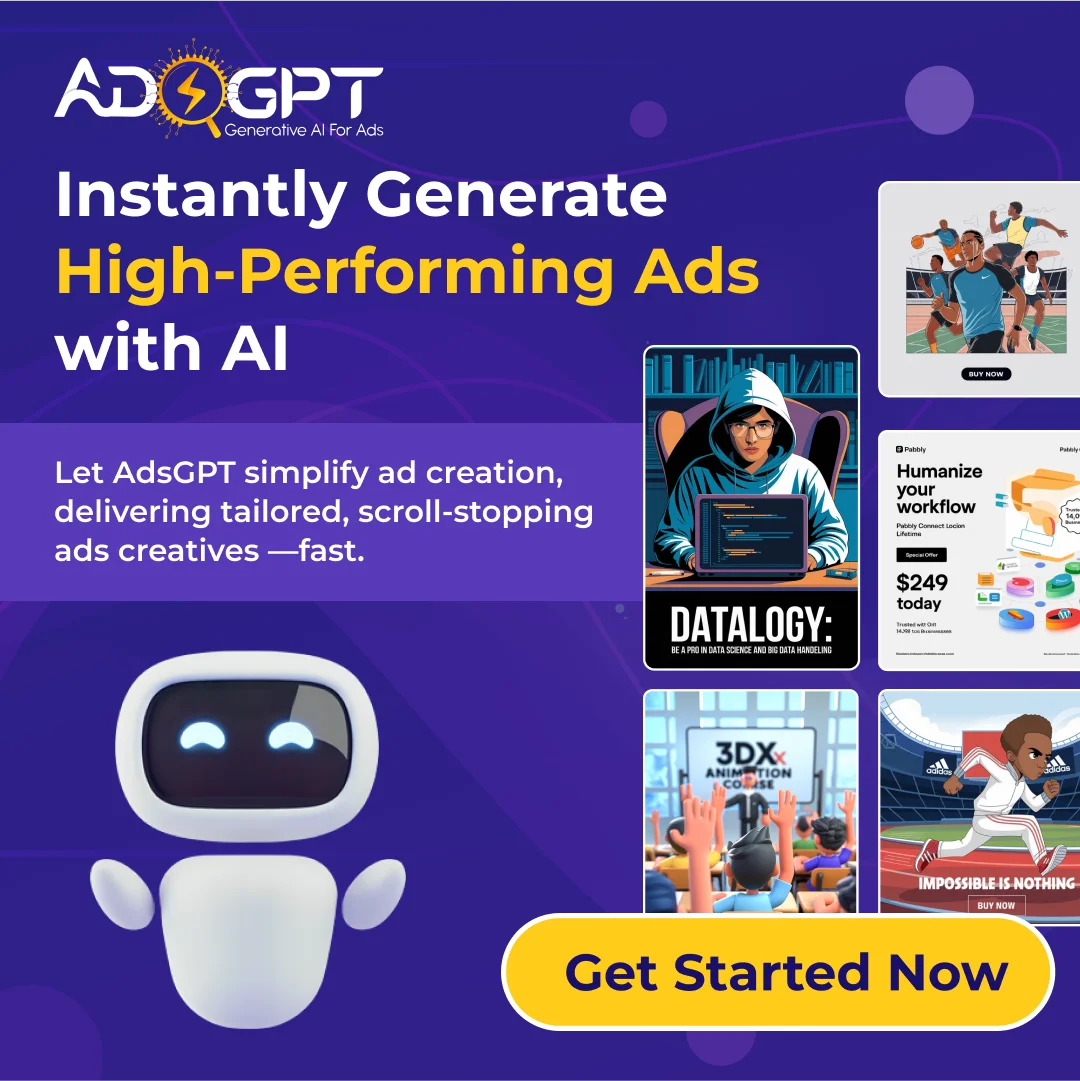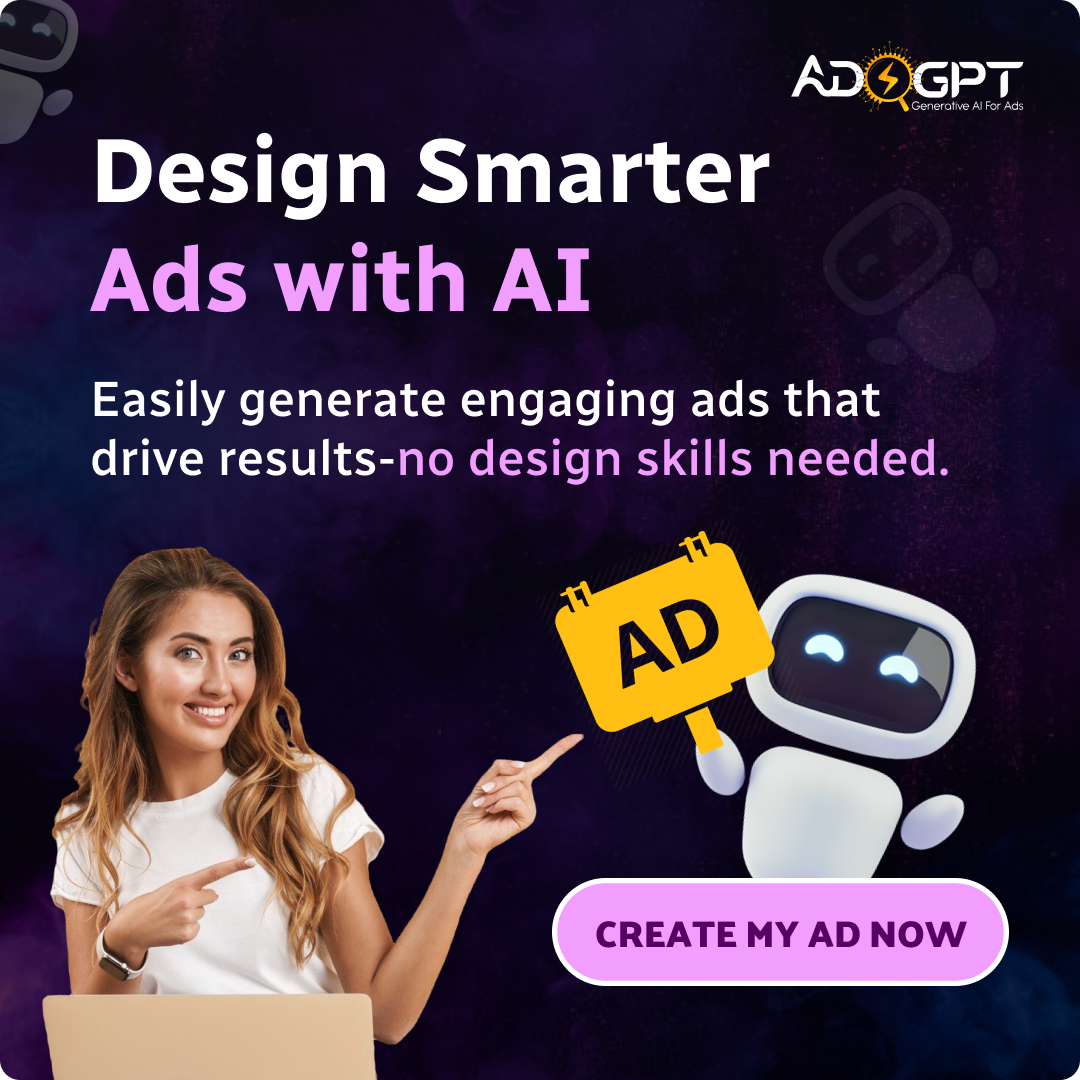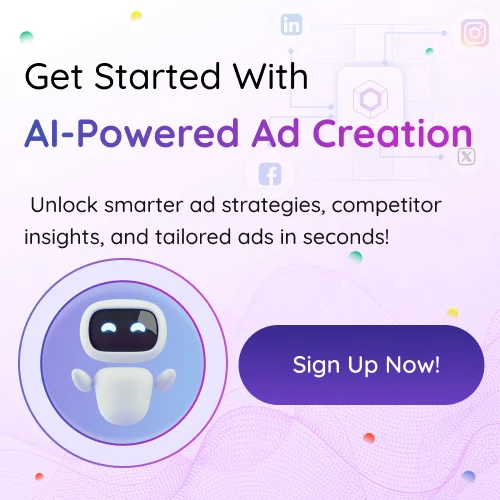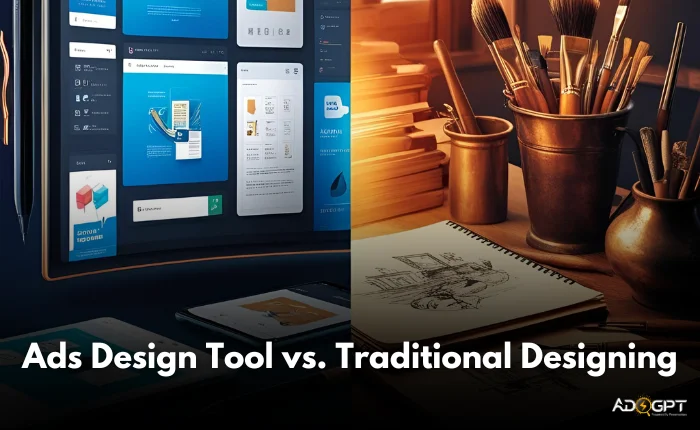
The use of ad design tools has significantly changed the world of digital advertising in recent years. Traditional ad design, which once relied heavily on skilled professionals using advanced software, is increasingly being complemented—or even replaced—by AI-powered tools. These ads design tools promise to make the ad creation process faster, more cost-effective, and accessible to businesses of all sizes.
Companies face constant pressure to create engaging, high-quality ads across various platforms. The rise of AI-powered ad design software offers a solution by automating tasks that once took considerable time and expert-level design skills. But how does this new approach compare to traditional design? Is it time for marketers to switch, or do traditional methods still have their place in ad creation?
This article will examine both approaches, exploring the advantages and limitations, and how ad builder software is reshaping the advertising industry.
Traditional Ad Design: Strengths And Weaknesses

Traditional ad design has been the cornerstone of advertising for decades. It involves manual work using professional tools like Adobe Photoshop, Illustrator, or similar programs to craft visual ads. This approach allows for significant customization and creativity but is not without its challenges.
Strengths of Traditional Ad Design
- Full Creative Control: Designers have complete autonomy over the visual and thematic elements of the ad. This level of control ensures that ads are highly tailored to a brand’s specific style and message.
- Tailored Branding: Traditional design allows for the creation of unique ads that are perfectly aligned with a brand’s identity. It ensures a distinctive look and feel that resonates with target audiences.
Weaknesses of Traditional Ad Design
- Time-Consuming: The process of designing ads manually, from concept to execution, can be extremely slow, especially when multiple variations are required for different platforms.
- High Costs: Professional design services are expensive, especially for businesses that need frequent or bulk ad creation. Small businesses, in particular, may find the cost prohibitive.
- Requires Expertise: The need for advanced design skills means that businesses without an in-house designer will have to outsource their ad creation. It adds additional costs and complexity.
- Scalability Challenges: As digital marketing strategies demand more ads for multiple platforms, creating and managing these ads manually becomes increasingly difficult and inefficient.
Given these limitations, businesses are exploring more automated and scalable solutions to ad design—solutions like AI-powered creative ad design tools.
Modern Ads Design Tool: A Game-Changer For Marketers
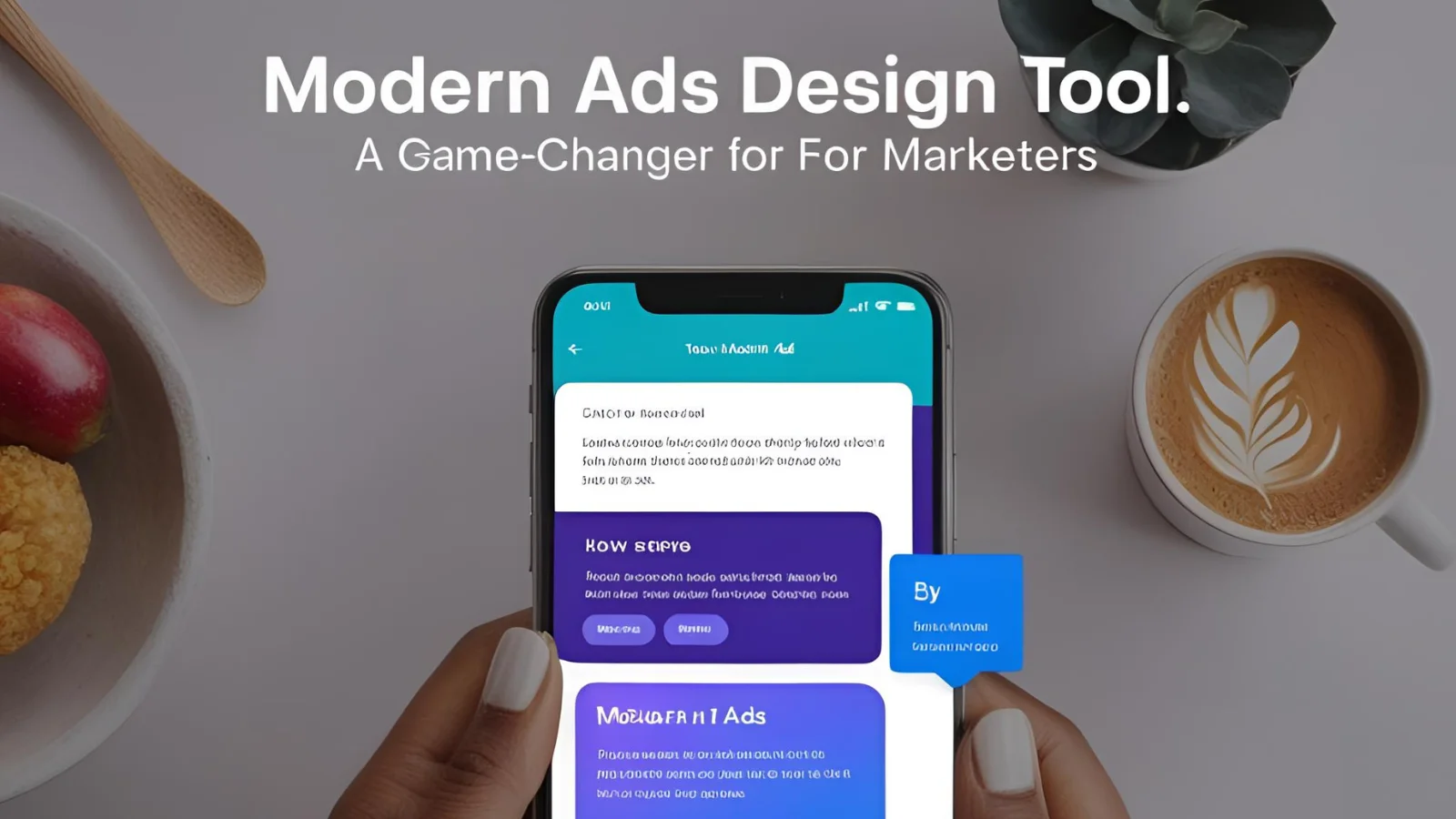
AI-powered ads design tools leverage machine learning and automation to drastically speed up the ad creation process. These tools can generate high-quality ad creatives in a fraction of the time it would take a traditional designer. They not only simplify the process but also help marketers achieve better results through data-driven insights.
How an Ads Design Tool Solves Common Design Challenges?
- Efficiency and Speed: AI can instantly generate a range of ad creatives based on pre-set templates or brand guidelines. It reduces the time spent on each project, allowing marketers to focus on other critical tasks.
- Cost-Effectiveness: AI-powered ad creator software eliminates the need for hiring professional designers, cutting down costs for businesses, especially those with limited marketing budgets.
- User-Friendly: These tools are designed for ease of use, so even marketers without professional design experience can create high-quality ads. Intuitive interfaces and drag-and-drop features make the design process accessible to anyone.
- Scalability: With the ability to quickly produce variations of ads, AI-driven tools make it easy to scale ad campaigns across multiple platforms and audiences. This level of flexibility is crucial for businesses running large-scale advertising campaigns.
By using ad builder software, marketers can streamline their ad creation process and focus on strategy rather than getting bogged down in design details.
Traditional Design vs. Ads Design Tool: A Feature Comparison
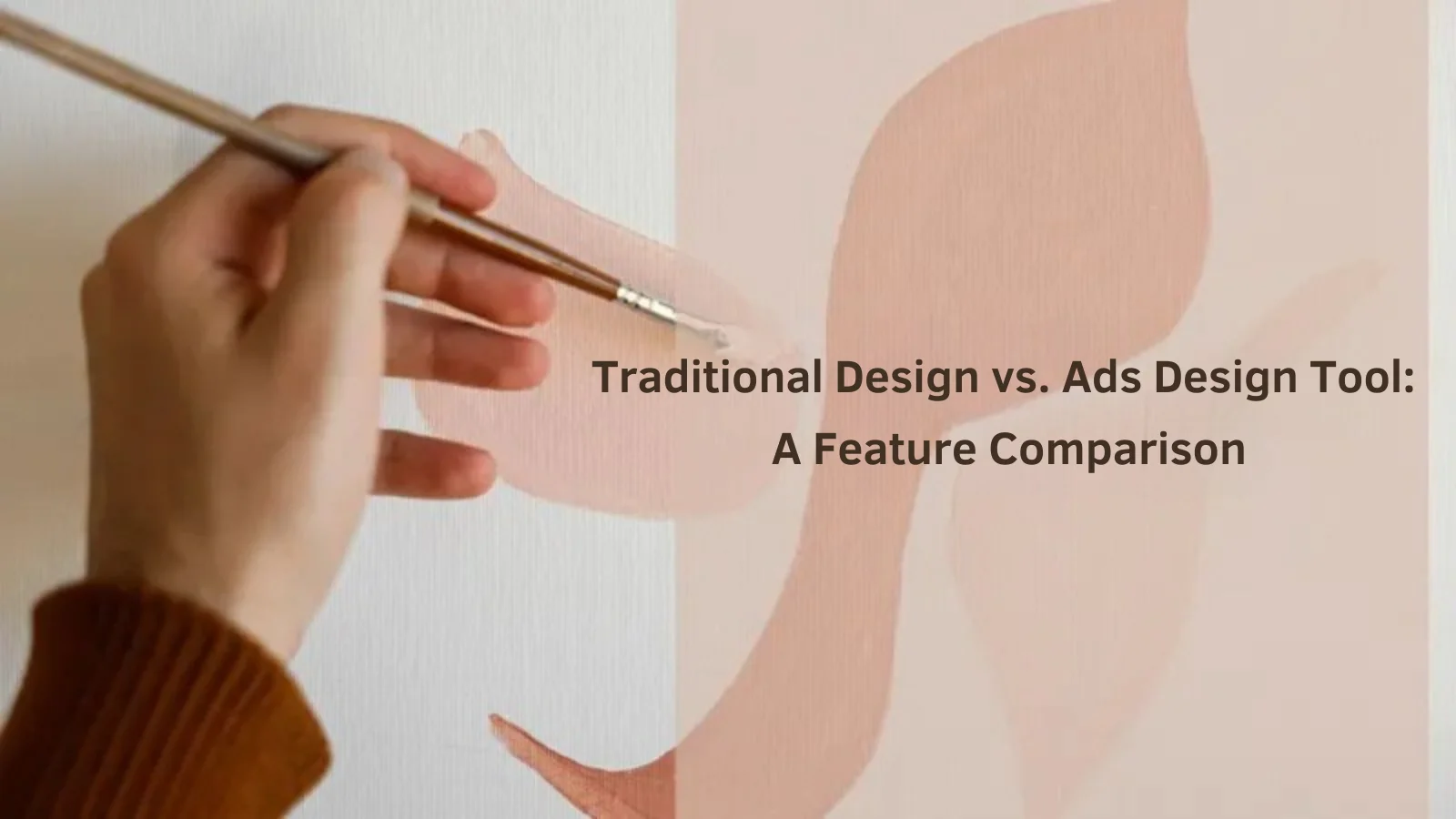
When comparing traditional design methods with AI-powered ads design tools, it’s clear that automation offers significant advantages in terms of speed, cost, and scalability.
Speed: Traditional ad design is often time-consuming and manual. It can take several hours or even days to complete a single ad, depending on the complexity. In contrast, ads design tools allow for instant ad generation, making the entire process much faster.
Cost: Traditional design usually involves higher costs, particularly due to designer fees. This can be a barrier for businesses with limited budgets. On the other hand, ads design tools are far more cost-effective, providing businesses with a budget-friendly option without compromising on quality.
Scalability: Traditional methods struggle when it comes to handling large volumes of ads, making it difficult to execute bulk campaigns. However, ads design tools shine in this area by offering easy scalability, allowing businesses to create ads for large-scale campaigns quickly and efficiently.
Customization: Traditional design provides the highest level of customization, allowing for highly tailored, brand-specific ads. While ads design tools use AI-based customization, they still offer plenty of flexibility, allowing users to modify elements to fit their brand’s identity and messaging.
User-Friendliness: Traditional design requires a significant level of expertise, making it less accessible to those without a design background. In contrast, ads design tools offer simple, intuitive interfaces that anyone can use, regardless of their design skills.
While traditional ad design still has its place, particularly for unique and bespoke projects, ads design tools have proven to be more efficient, scalable, and cost-effective. This makes them an ideal choice for digital marketers who need to create multiple ads across various platforms quickly and affordably.
The Role Of AI In Online Ad Design
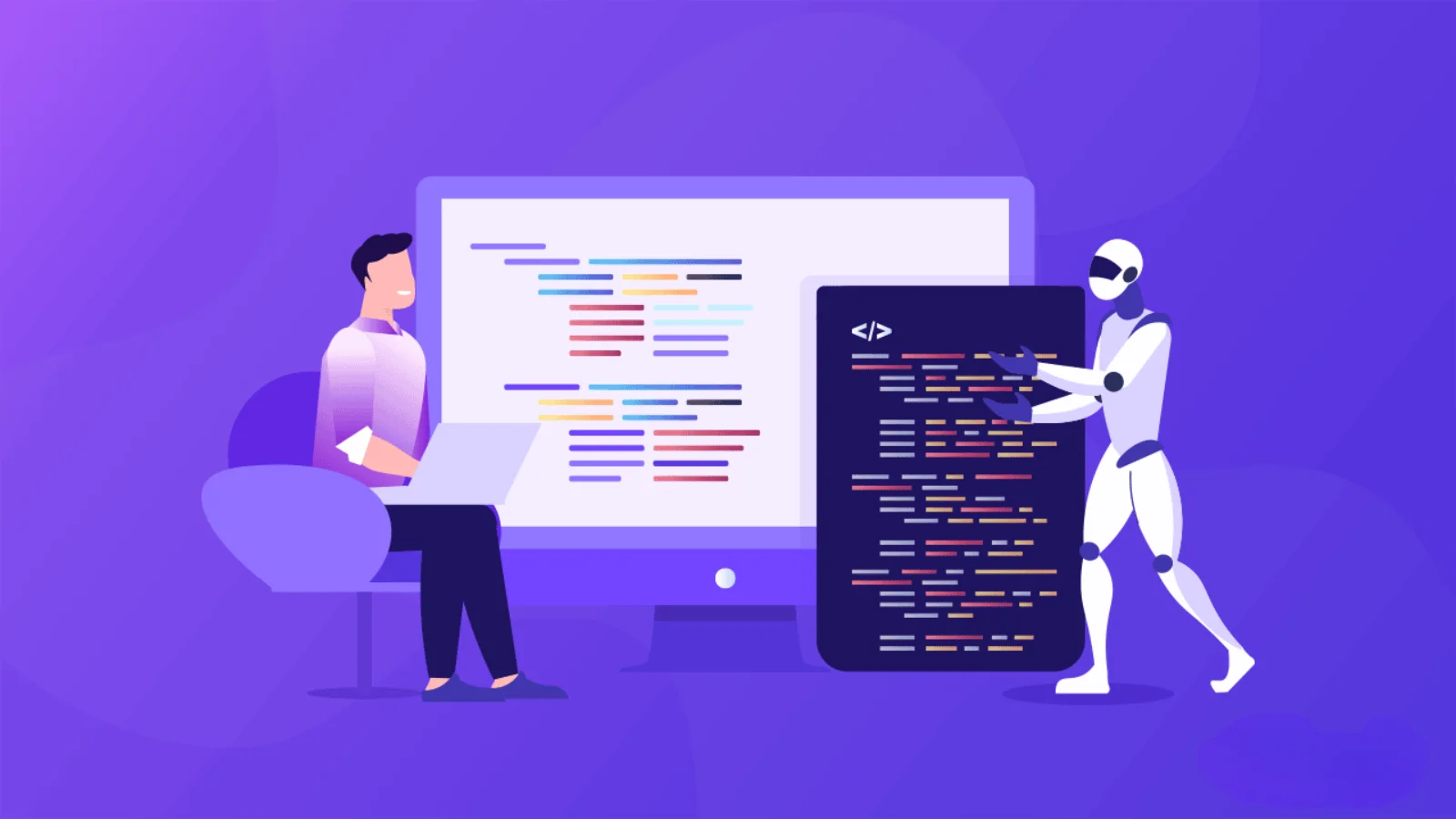
AI is becoming increasingly integral to the world of online advertising. With its ability to process vast amounts of data and identify trends, AI-powered ad design software can generate designs that are not only aesthetically appealing but also optimized for engagement.
How AI Enhances Ad Design:
- Automated Ad Creation: AI tools can generate ad creatives in real time, offering a variety of formats and styles. This automation drastically cuts down on the time required to develop new campaigns.
- Performance Optimization: AI-driven tools automatically optimize ads based on performance data. By analyzing which elements resonate most with audiences, these tools can adjust designs for maximum impact, even suggesting changes to improve ad effectiveness.
- Targeted Customization: AI can analyze audience data, ensuring ads are tailored to specific demographics, locations, and interests. This ensures the right message is delivered to the right audience at the right time.
By using AI-powered ad creator software, businesses can ensure that their ads are not only creative but also effective in achieving marketing objectives.
AdsGPT: Redefining AI-Powered Ad Creation
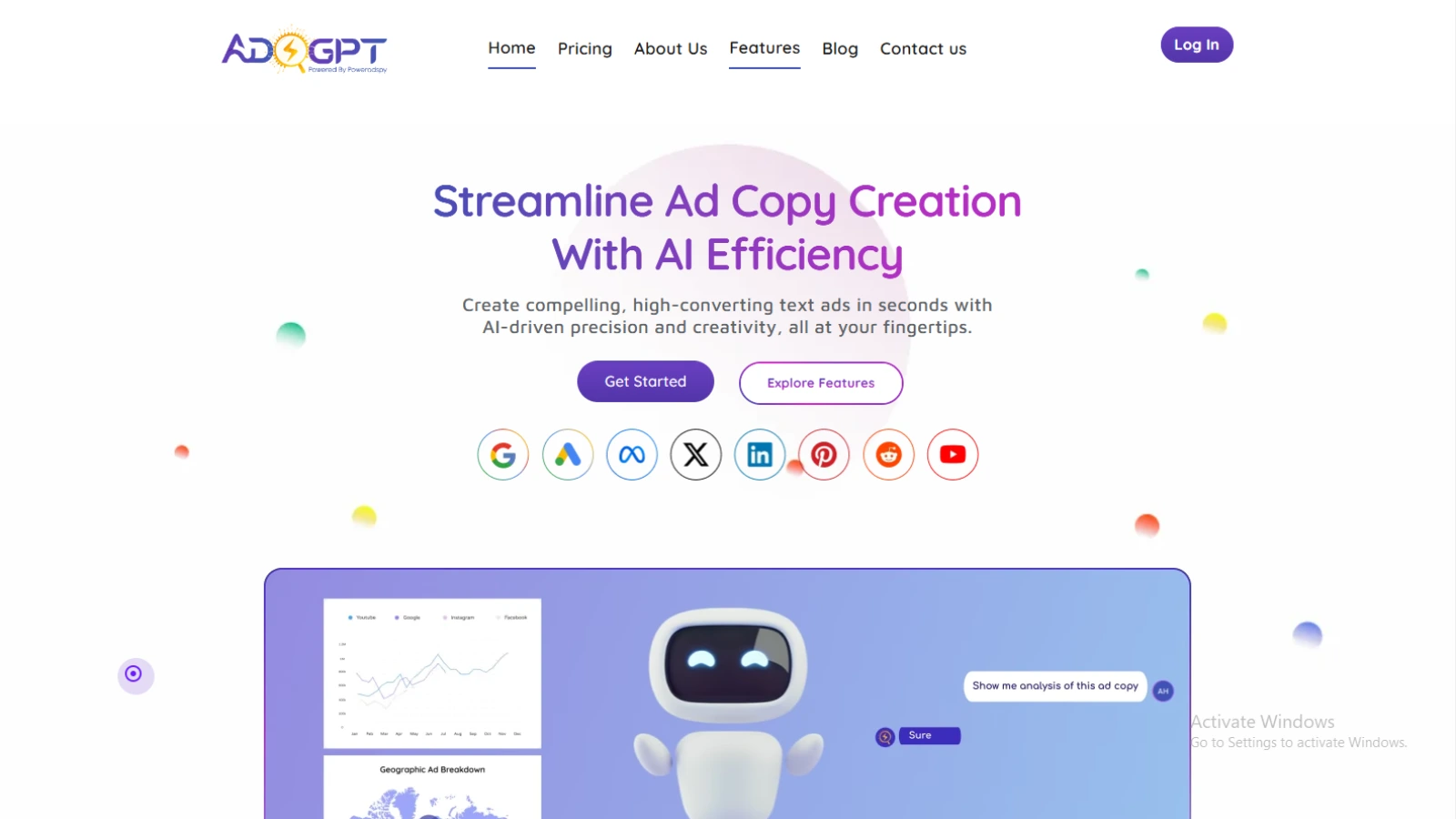
Among the many ads design tools available today, AdsGPT stands out due to its unique combination of automation, customization, and performance-driven insights. AdsGPT allows marketers to create professional-quality ads with minimal effort, while also leveraging AI to optimize designs based on real-time data.
What Sets AdsGPT Apart?
- AI-Powered Automation: AdsGPT uses machine learning to generate high-quality ad designs based on brand preferences and industry trends.
- Customization Options: While AI handles the heavy lifting, users can still adjust and personalize the designs to fit their needs.
- Multi-Platform Integration: AdsGPT can create ads optimized for a variety of platforms, including social media, Google Ads, and display networks, ensuring a seamless experience for marketers.
- Performance Optimization: AdsGPT analyzes ad performance data and automatically adjusts designs for better engagement and conversions, giving users an edge in their advertising efforts.
AdsGPT’s user-friendly interface and advanced features make it the ideal ad design software for businesses looking to streamline their ad creation process and achieve better results.
AdsGPT’s Key Features
AdsGPT offers several features that make it the leading choice for marketers looking to improve their ad creation process.
- AI-Powered Ad Generation: Generate high-quality ad creatives in seconds, based on your business needs and industry trends.
- Customizable Templates: A range of professional templates are available, allowing businesses to tailor ads to their brand identity.
- Automated Performance Optimization: AdsGPT uses AI to analyze real-time performance data, making adjustments to ensure your ads are always optimized for engagement.
- Multi-Platform Compatibility: Create ads for multiple platforms, including social media, display ads, and more.
- User-Friendly Interface: Designed to be intuitive and easy to use, AdsGPT requires no prior design experience, making it accessible to marketers at all levels.
The Future Of Ad Creation: Automation vs. Manual Efforts
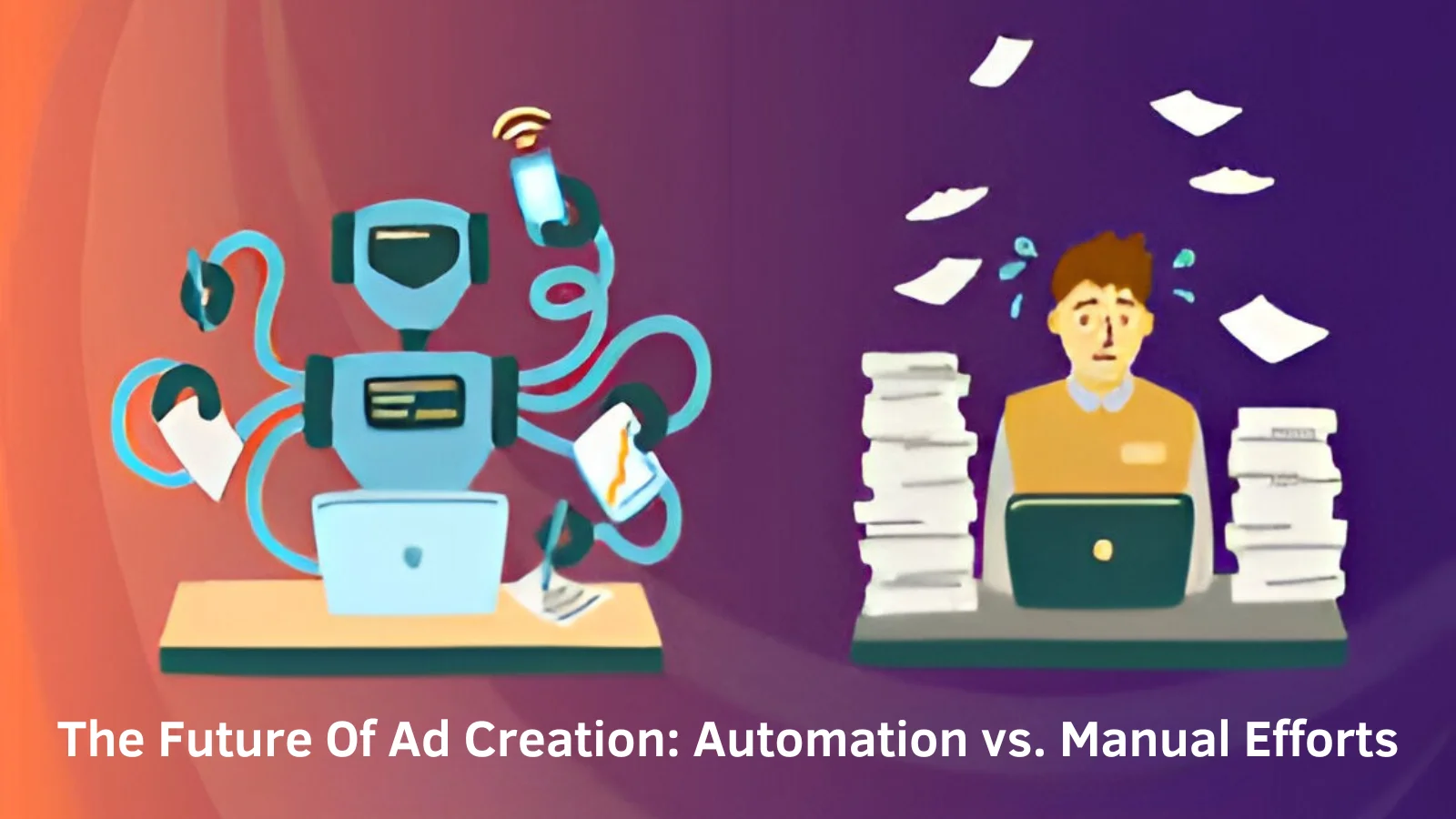
The future of advertising lies in automation, with AI continuing to play a central role in the process. As AI becomes more sophisticated, ads design software will evolve to offer even greater customization and performance optimization.
- Enhanced Personalization: AI will increasingly personalize ads based on deeper insights into consumer behavior and preferences.
- Smarter Design Tools: Future ai ad builder software will offer more advanced features for A/B testing, creative variations, and real-time optimization.
- Seamless Integrations: Ads design tools will integrate more seamlessly with other marketing platforms, allowing businesses to manage their entire advertising strategy from one centralized location.
As AI continues to evolve, businesses that embrace ads design tools will have a significant advantage in creating effective, high-performance ads at scale.
Conclusion
The debate between traditional ad design and AI-powered ads design tools ultimately comes down to the needs of the business. While traditional design offers unmatched creative control and uniqueness, it is slow, expensive, and not scalable for modern digital marketing demands.
AI-powered ad design software provides the speed, cost-effectiveness, and scalability that today’s marketers need. For businesses looking to stay ahead in the competitive world of digital marketing, adopting an ads design tool like AdsGPT is a smart investment. With its AI-powered automation, customizable templates, and performance-driven optimization, AdsGPT helps marketers create high-quality ads faster and more efficiently than ever before.
The future of advertising is automated and optimized—embrace the change with AdsGPT.

